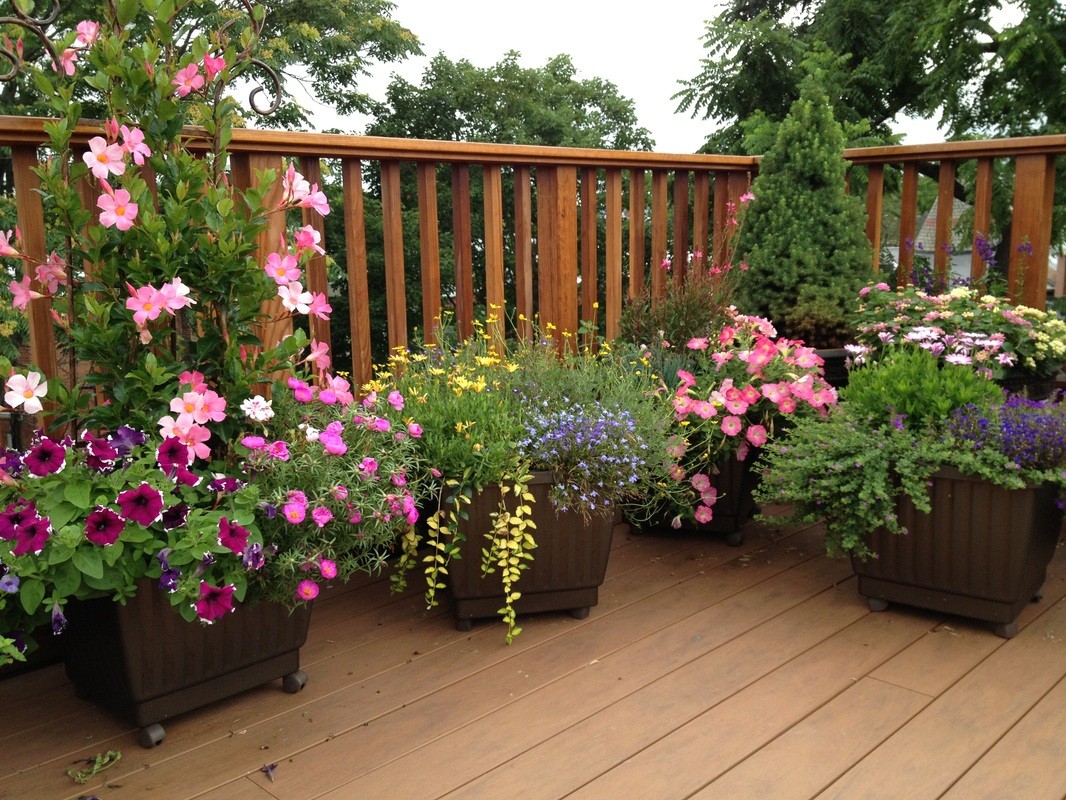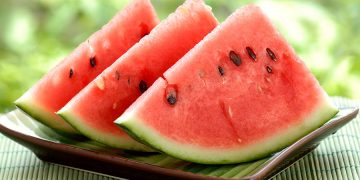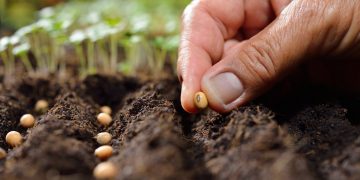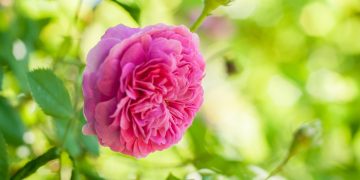This spring, before you head out to buy plants for your porch, deck or patio, learn what it takes to create planters with style.
Chances are, the gardener who planted up that beautiful pot may have shopped at the very same nursery as you. They may have traveled down the same aisles and may have chosen among the same 200 kinds of plants and 10,000 possible plant combinations.
Plan the structure
The structure of your container planting, that is. When you’re selecting plants in 4″ or 6″ pots, you need to think about their eventual height, shape and growth habit. Most plants are either upright, broad, or trailing. The most successful container combinations usually include at least one of each form.
Start with a tall, upright plant, such as Purple Fountain Grass (Pennisetum setaceum ‘Rubrum’) or a fancy-leaved, dwarf canna lily. Add one or two broad, mid-height plants such as heliotrope, coleus, African daisies (osteospermum), or dwarf dahlias. Then select one or two trailing forms, such as ivy geranium, sweet potato vine, bacopa, or licorice plant (Helichrysum petiolare).
Of course another sure-fire way to create a strong, architectural statement is to place just one bold plant in the container. Candidates for this effect would include a thick, upright clump of bamboo or the perfect symmetry of New Zealand flax (phormium). Consider flanking an entryway with a pair of dwarf Alberta spruce or false cypress. A clump of ornamental grass, such as feather reed grass, makes a bold statement. Or you could focus all the attention on a trailing form; envision a tall, celadon-green urn filled with nothing but a burgundy-colored sweet potato vine.
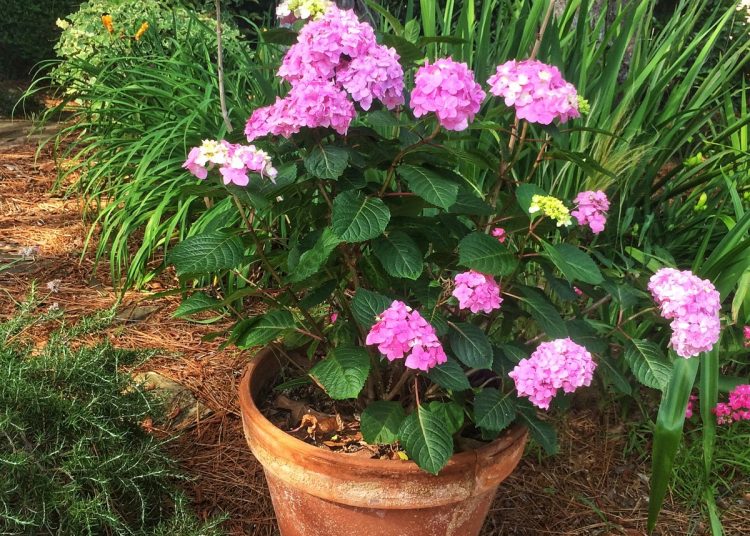
Consider the growing conditions
If you fill a windowbox with shade-loving impatiens and then put it in a sunny, west-facing location, those impatiens will struggle to survive. You will also fail if you try to grow sun-loving ivy geraniums on a shady porch. Think about where the pot will be located and then select plants that will like living there. Plant labels usually list sun/shade requirements (you’ll also find a few recommendations at the end of this article).
It’s also important to combine plants with similar moisture requirements. Desert-loving portulaca won’t be happy growing in the same pot with moisture-loving hibiscus. Soil preference is also important. A pot filled with rosemary, bay, and thyme should contain a sandy, sharply drained soil mix that mimics the Mediterranean conditions these plants prefer. Fuchsia, on the other hand, wants a humusy, moisture-retentive soil that’s similar to what’s found in a wet tropical rainforest. Plant labels (or a well-informed sales associate) can provide this information.
Contrast textures
Foliage is just as important as color in creating a successful container planting. Once you’ve gathered a group of candidates, think about the size of the leaves and their surface texture. Leaf textures range from waxy (ivy geraniums) to shiny (croton), to prickly (asparagus fern) or velvety (dusty miller). Contrasting foliage really grabs the eye.
For an exciting texture combination, imagine a hair-like tuft of the lemon yellow grass known as ogon (Acorus gramineus), with the spiky lime-green succulent Angelina (Sedum repestre), the waxy burgundy leaves of Sedum ‘Garnet Brocade’, and the lacy flowers of Coral Flying Colors diascia.
Be bold with color
A well-composed container planting can be as visually stimulating as a great painting. Generate energy and excitement by combining complimentary colors such as purple and orange or yellow and blue. Or paint a more visually soothing composition by limiting yourself to related colors such as blues and pinks or reds and yellows. You can also create a stunning, very sophisticated look using nothing but greens, whites and silvers.
When selecting flower and foliage colors, you may also want to think about the color of your house, the color of your deck or patio pavers, and the color in adjacent beds and borders. That said, pots and planters present a great opportunity to experiment with dramatic color combinations that you’d probably never dare to use in your permanent landscape.

